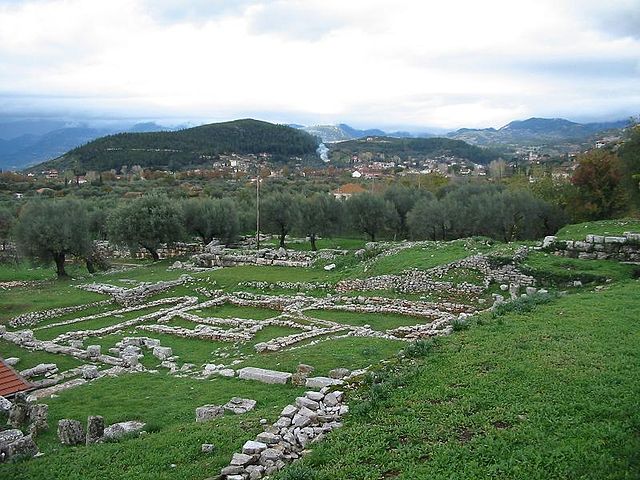The Aetolian League was a confederation of tribal communities and cities in ancient Greece centered in Aetolia in Central Greece. It was probably established during the early Hellenistic era, in opposition to Macedon and the Achaean League. Two annual meetings were held at Thermon and Panaetolika. The league occupied Delphi from 290 BC and steadily gained territory until, by the end of the 3rd century BC, it controlled the whole of central Greece with the exception of Attica and Boeotia. At its peak, the league's territory included Locris, Malis, Dolopes, parts of Thessaly, Phocis, and Acarnania. In the latter part of its power, certain Greek city-states joined the Aetolian League such as the Arcadian cities of Mantineia, Tegea, Phigalia and Kydonia on Crete.
Theater of Calydon, Aetolia
Thermos, sanctuary and assembly place of the Aetolian League
Ancient Greece was a northeastern Mediterranean civilization, existing from the Greek Dark Ages of the 12th–9th centuries BC to the end of classical antiquity, that comprised a loose collection of culturally and linguistically related city-states and other territories. Most of these regions were officially unified only once, for 13 years, under Alexander the Great's empire from 336 to 323 BC. In Western history, the era of classical antiquity was immediately followed by the Early Middle Ages and the Byzantine period.
The Parthenon, a temple dedicated to Athena, located on the Acropolis in Athens, is one of the most representative symbols of the culture and sophistication of the ancient Greeks.
The Victorious Youth (c. 310 BC) is a rare, water-preserved bronze sculpture from ancient Greece.
Dipylon Vase of the late Geometric period, or the beginning of the Archaic period, c. 750 BC.
Early Athenian coin, depicting the head of Athena on the obverse and her owl on the reverse – 5th century BC.






